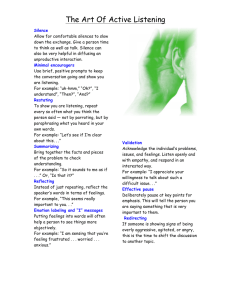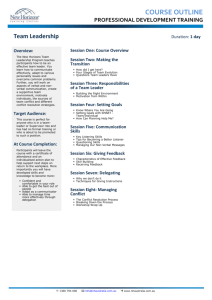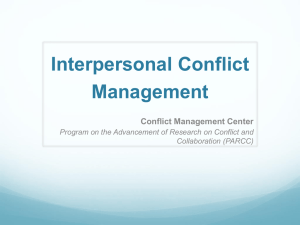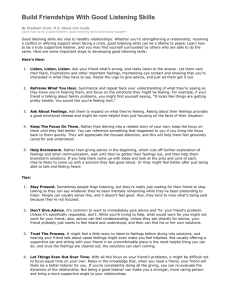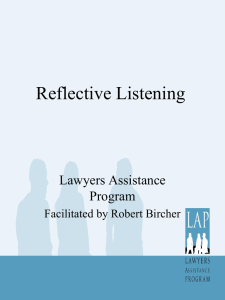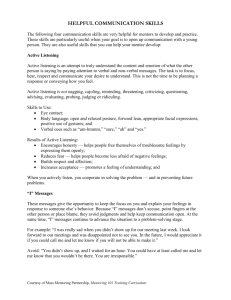Principles and Techniques of Effective Communication ()
advertisement
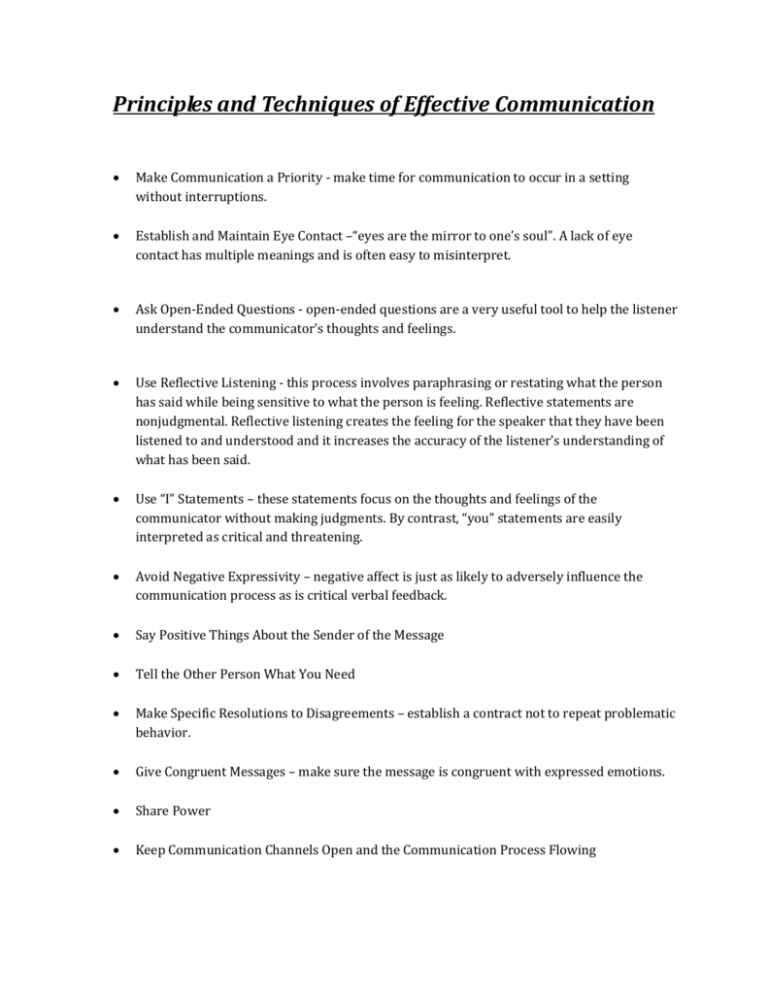
Principles and Techniques of Effective Communication Make Communication a Priority - make time for communication to occur in a setting without interruptions. Establish and Maintain Eye Contact –“eyes are the mirror to one’s soul”. A lack of eye contact has multiple meanings and is often easy to misinterpret. Ask Open-Ended Questions - open-ended questions are a very useful tool to help the listener understand the communicator’s thoughts and feelings. Use Reflective Listening - this process involves paraphrasing or restating what the person has said while being sensitive to what the person is feeling. Reflective statements are nonjudgmental. Reflective listening creates the feeling for the speaker that they have been listened to and understood and it increases the accuracy of the listener’s understanding of what has been said. Use “I” Statements – these statements focus on the thoughts and feelings of the communicator without making judgments. By contrast, “you” statements are easily interpreted as critical and threatening. Avoid Negative Expressivity – negative affect is just as likely to adversely influence the communication process as is critical verbal feedback. Say Positive Things About the Sender of the Message Tell the Other Person What You Need Make Specific Resolutions to Disagreements – establish a contract not to repeat problematic behavior. Give Congruent Messages – make sure the message is congruent with expressed emotions. Share Power Keep Communication Channels Open and the Communication Process Flowing

